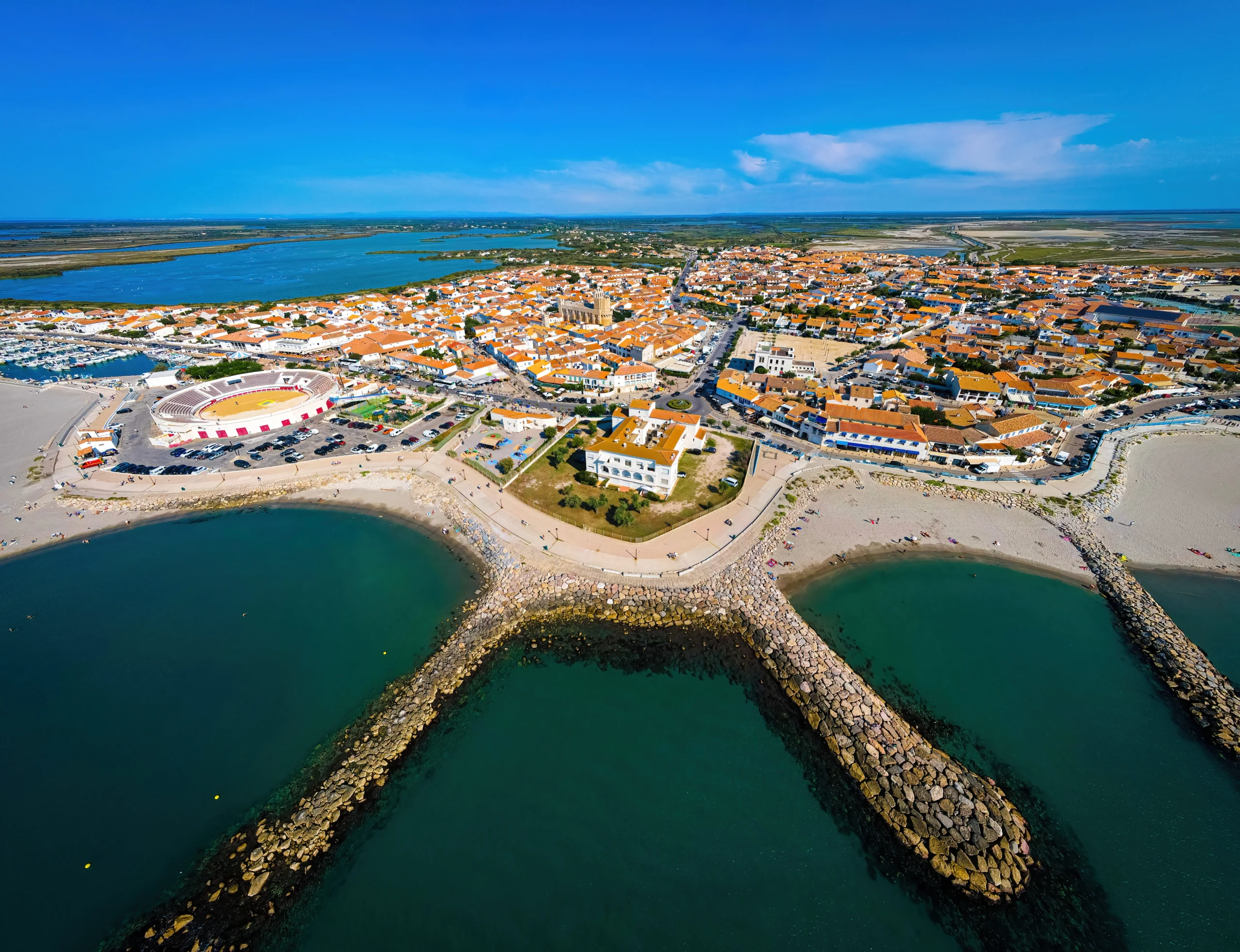The European road test: MG’s new electric flagships, the Cyberster and IM5

Mark G. Whitchurch
- Published
- Lifestyle
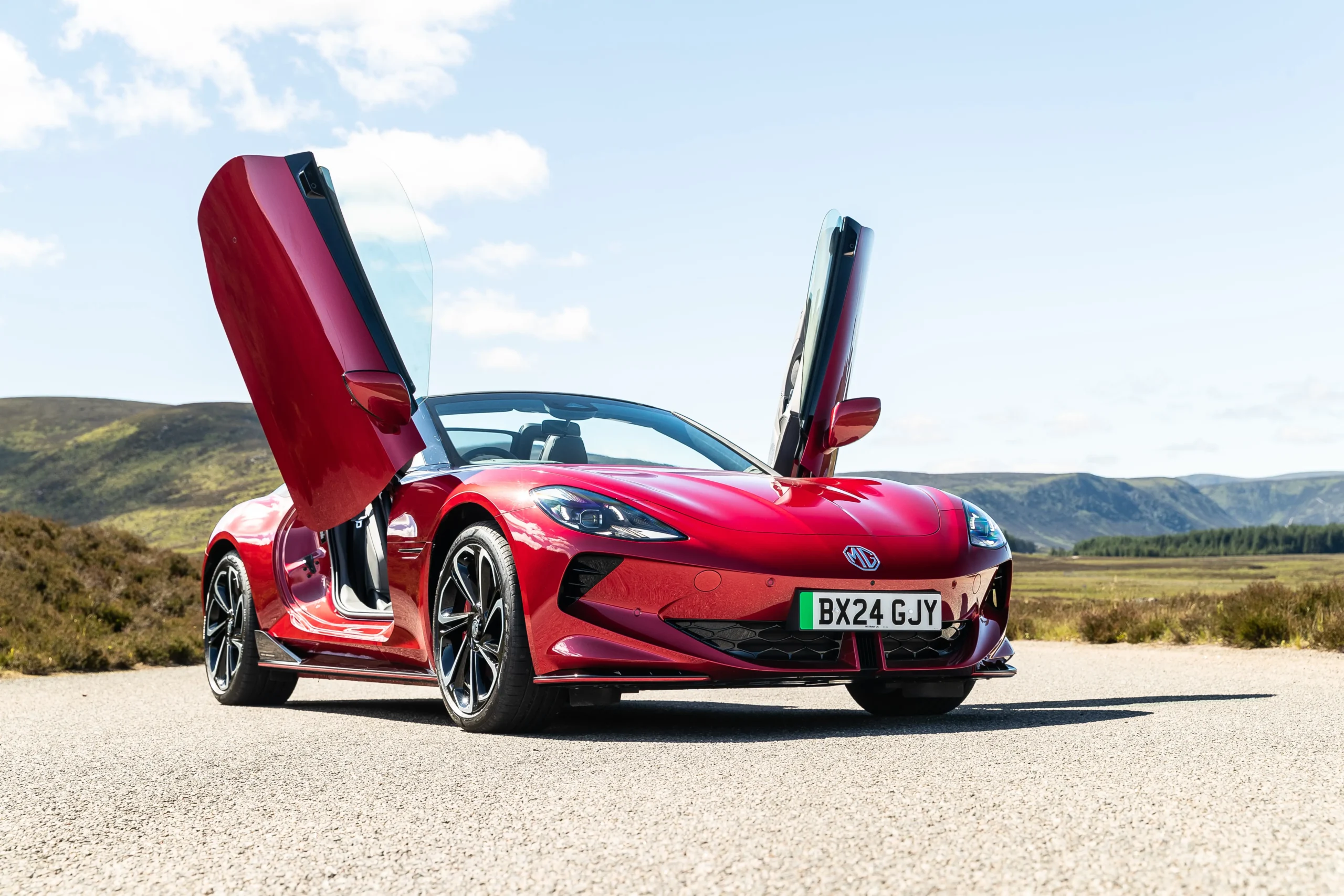
MG’s first electric roadster and its most powerful production car arrive together in a pivotal year for the marque. Mark G Whitchurch evaluates the Cyberster and IM5 and considers their place in MG’s European strategy
MG is entering a new phase in its development as an electric manufacturer, and the scale of that change becomes clearer when set against the long and sometimes unpredictable path the marque has taken to reach this point. SAIC’s early years at the helm brought MG back into view with straightforward hatchbacks and compact SUVs that rebuilt familiarity, yet the company is now working with a far broader ambition. Its current strategy places MG directly in the centre of the European EV market, supported by sustained investment in design, engineering and market reach, and the expanding model range signals a readiness to operate in areas that once seemed beyond its remit.
That ambition sits on a history with many layers. MG began in the 1920s under Cecil Kimber at Morris Garages and developed quickly during the 1930s through cars that set records and earned international respect. The EX120 “Magic Midget” broke the 100 mph barrier in the 750cc class. The supercharged K3 Magnette delivered a landmark Mille Miglia class win in 1933 and became the first non-Italian entry to achieve that result. The momentum carried into the post-war years. The MG TC introduced American servicemen to British sports cars and created a new export market. The MGA gained further visibility, including its appearance in an Elvis Presley film. The MGB became a defining model, reaching more than half a million sales. Experimental projects also continued. The EX181 achieved 254.91 mph at Bonneville in 1959, and its success added another chapter to the marque’s record-breaking archive. The following decades brought challenges through changes in ownership and industrial pressure, leading ultimately to the collapse of MG Rover in 2005. SAIC revived the marque with new resources, and today’s line-up shows how those foundations now support a renewed presence across Europe.
That renewed presence gained momentum through the MG4, which placed the brand firmly in the electric hatchback sector. Models such as the ZS EV and MG5 widened the audience and increased visibility. The next step requires cars with greater influence, particularly in markets where reputation and heritage play a significant role. Two new models now carry that responsibility. The Cyberster reconnects MG with the open-top spirit that formed the earliest part of its identity, and the IM5 enters the executive saloon sector with performance, refinement and charging capability shaped for long European journeys.
My own connection to MG has followed a similar timeline. In the early years of my career, I relied on a 1937 TA in gunmetal with red wheels as my daily transport between weekly manufacturer test cars. That TA accompanied me through many journeys, shaped in part by admiration for the pre-war MG drivers who pushed their small machines around Brooklands with remarkable resolve. Their commitment defined much of the marque’s early character, and my interest deepened as I learned more about the small, supercharged engines that consistently exceeded expectations in competition. Sharing initials with the badge added a small personal quirk to the relationship, and MG became woven into moments that mattered: a red TC carried me to my wedding, a green MG later helped me regain stability when life changed direction. MG shifted through many eras during that time, and I remained aware of each transition.
It is against this backdrop that the MG Cyberster and MG IM5 should be viewed. I tested both on European roads to understand how they perform and to see if they reflect the scale and direction of MG’s present ambiti ons.
The MG Cyberster
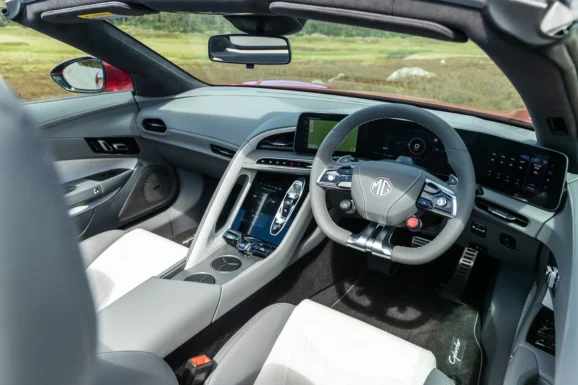
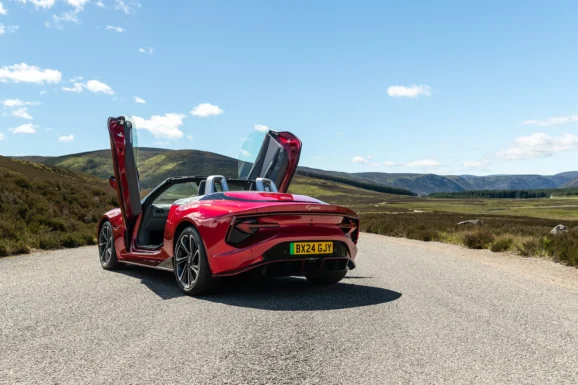
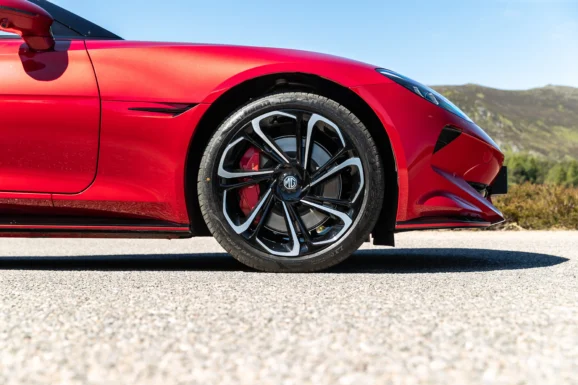
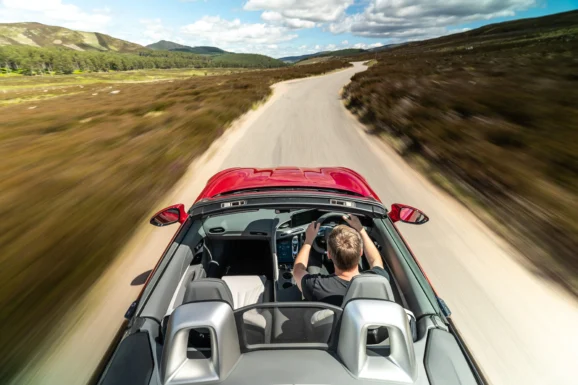
The MG Cyberster stands as MG’s first all-electric roadster and presents the most expressive sports model the marque has produced in many years. The car carries long and low proportions, a purposeful stance and scissor doors that frame its entry into the modern EV sports sector. LED blade lighting and defined surfaces contribute to its visual clarity, and the silhouette projects confidence whether the car is positioned outside a hotel or moving along coastal roads.
The cabin offers more room than most two-seat roadsters. Synthetic leather and suede-effect materials extend across the interior, and the heated seats provide six-way adjustment that supports longer journeys. A triple-screen driver layout forms the main interface. The underlying structure of the menus requires patience, and I spent time working through layers of functions before locating the settings I wanted. The portrait-style central touchscreen manages climate and audio, and I gained the impression that additional physical controls would support concentration. The paddles behind the steering wheel allow immediate adjustment of regenerative braking and power modes. An F1-style Super Sport button on the wheel provides direct access to maximum performance.
Practicality remains a strength for a roadster. The boot holds 249 litres and accommodates weekend luggage. A shelf behind the seats accepts soft bags. MG has not added a front trunk, maintaining the structural layout.
Two versions complete the range. The Trophy uses a single rear motor with 335 bhp and reaches 62 mph in 5.0 seconds. The top speed is 121 mph. The 77 kWh battery allows a range of 316 miles. I tested the GT, which uses two motors for 496 bhp and 725 Nm along with all-wheel drive. The car reaches 62 mph in 3.2 seconds and provides a range of 276 miles. DC charging peaks at 144 kW with a 10–80% time of 38 minutes. A home wallbox completes a full charge in 12.5 hours.
The Cyberster weighs 2.2 tonnes, yet the battery’s low placement maintains stability through turns. The all-wheel-drive system supported grip on the damp autumn roads during my test. The steering provided a clear sense of control, and the car held its line with accuracy through bends. The overall handling produced genuine engagement, and the driving experience remained energetic without any sense of lacking engine sound. The seating position and visibility supported confidence across narrow roads and wider routes alike.
Roof-down driving forms a central part of the Cyberster’s appeal. The aerodynamic profile controls turbulence effectively, even at higher speeds, and the heated seats and strong heater maintain comfort during colder months. MG offers synthetic sound modes that mix modern EV tones with references to classic MG exhaust notes, and these add character when the roof is lowered. The Cyberster moves cleanly across varied surfaces, and the ride remains composed at speed. It retains elements of MGB charm through its sense of open-road engagement, although it operates with far greater capability and refinement due to its electric platform. The car enters a sector that includes the BMW Z4 and Porsche 718 Boxster and introduces an electric alternative with clear sporting intent.
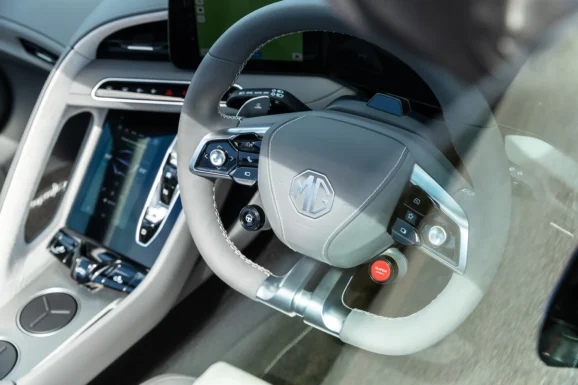


Cyberster: At a Glance
Price: £55,245 (Trophy) / £60,245 (GT)
Power: 335 bhp (Trophy) / 496 bhp (GT)
Torque: 725 Nm (GT)
0–62 mph: 5.0 s (Trophy) / 3.2 s (GT)
Top speed: 121 mph (Trophy)
Battery: 77 kWh
Range: 316 miles (Trophy) / 276 miles (GT)
Charging: 144 kW DC (10–80% in 38 minutes); Home wallbox 12.5 hours
Boot: 249 litres
Drive: RWD or AWD
The MG IM5
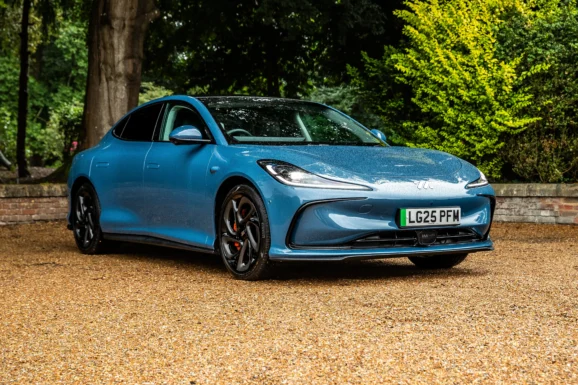
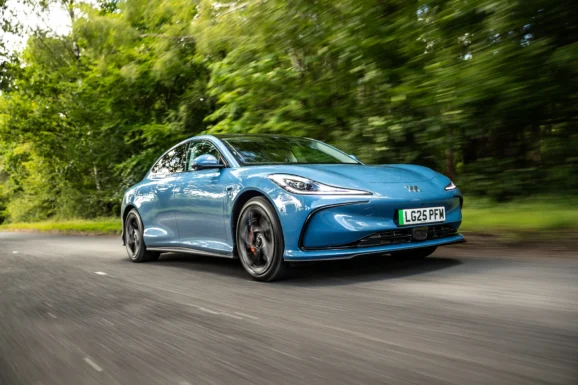
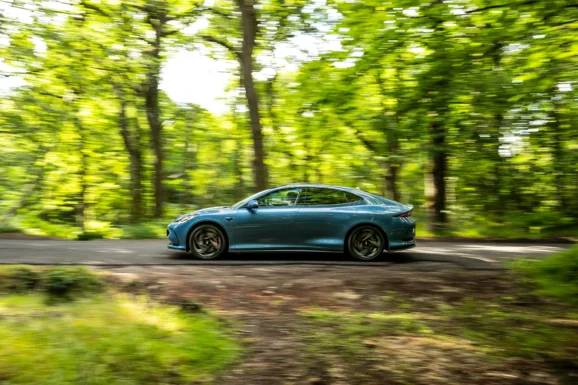
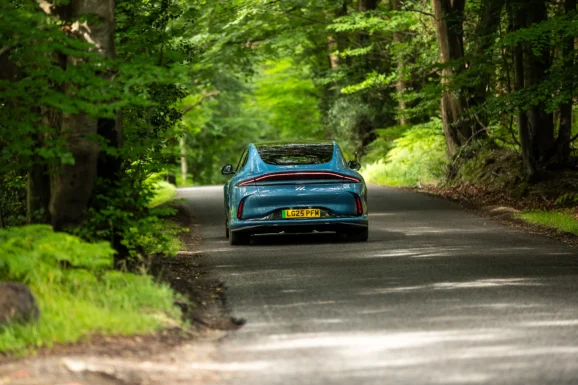
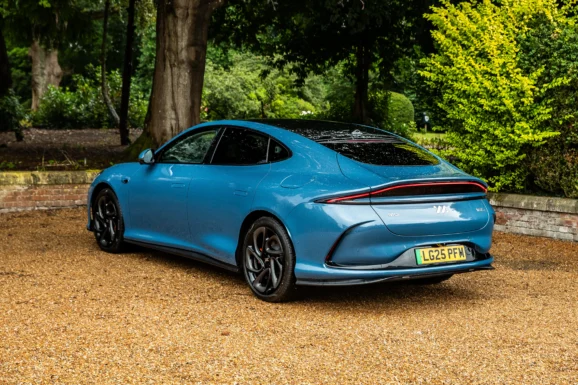
The IM5 stands as MG’s most powerful production car to date and carries the marque into the executive saloon sector. The silhouette aligns with the broad proportions of cars such as the Tesla Model 3, and the sharper lines give the IM5 a confident stance.
The cabin follows a minimalist theme. The 10.5-inch central touchscreen manages most functions and sits beneath a 26.3-inch dashtop display. The materials include artificial leather and soft-touch surfaces, and the overall build quality supports the car’s position in the segment. The reliance on touch inputs suits some drivers, while others may prefer more physical controls. Rear passengers benefit from heated seats, USB-C ports and generous legroom. The boot holds 457 litres, and the frunk adds 18 litres. Double-glazed glass, sound insulation and a panoramic sunroof create a quiet and contained cabin environment suited to long motorway journeys.
Three versions form the range. The Standard Range uses a 75 kWh battery and produces 291 bhp. It reaches 62 mph in 6.8 seconds and offers a range of 304 miles. The Long Range version uses a 100 kWh battery and produces 402 bhp. It reaches 62 mph in 4.9 seconds and offers a 441-mile range. I tested the Performance model, which uses two motors for 741 bhp. This figure makes it the most powerful MG ever produced. The car reaches 62 mph in 3.2 seconds and holds a top speed of 167 mph. The range stands at 357 miles.
Charging represents one of the IM5’s strongest attributes. The Standard Range uses a 400V system with a 10–80% time of 26 minutes. The Long Range and Performance versions use 800V architecture that supports peak charging rates up to 396 kW. A 10–80% charge completes in 17 minutes, placing the IM5 among the fastest-charging electric cars currently available.
The driving experience aligns with the car’s purpose. Acceleration arrives with conviction and continues at higher speeds with stability. The chassis employs double-wishbone front suspension and a multi-link rear layout. Body movement stays controlled through long curves and rapid direction changes. The steering offers accuracy, although feedback through the wheel remains limited. The ride supports long journeys, and the cabin maintains its quiet character at speed. Visibility remains strong at the front. The small rear window restricts the view behind.
Euro NCAP has awarded the IM5 a five-star rating. MG Pilot driver-assistance systems manage lane support, adaptive cruise control and active safety interventions. The lane-keeping system applies notable inputs in heavy motorway traffic and requires familiarity.
Pricing runs from £39,450 to £48,495. The IM5 delivers long range, very fast charging and strong refinement. Drivers seeking higher levels of engagement may lean towards models such as the BMW i4 or Polestar 2. The IM5 suits buyers who prioritise space, comfort and capability for extensive European travel.


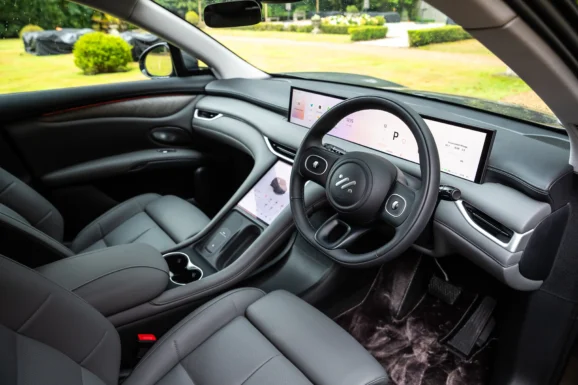
IM5: At a Glance
Price: £39,450–£48,495
Power: 291 bhp / 402 bhp / 741 bhp
0–62 mph: 6.8 s / 4.9 s / 3.2 s
Top speed: 167 mph (Performance)
Battery: 75 kWh / 100 kWh
Range: 304 miles / 441 miles / 357 miles
Charging: 400V (10–80% in 26 minutes) / 800V (10–80% in 17 minutes)
Boot: 457 litres + 18-litre frunk
Drive: RWD or AWD
READ MORE: ‘The European Road Test: 2025 Volvo XC90 Ultra‘. From Liverpool’s historic docks to Snowdonia’s mountain passes, Mark G Whitchurch puts Volvo’s refreshed 2025 XC90 Ultra through a true grand tour – testing its comfort, performance and practicality over motorways, coastal roads and the steep climbs of North Wales.
Do you have news to share or expertise to contribute? The European welcomes insights from business leaders and sector specialists. Get in touch with our editorial team to find out more.
Images: MG/Supplied
Sign up to The European Newsletter
RECENT ARTICLES
-
 December night sky guide: what to look for and where to find it
December night sky guide: what to look for and where to find it -
 Four Seasons Yachts reveals overhauled 2027 Mediterranean programme
Four Seasons Yachts reveals overhauled 2027 Mediterranean programme -
 The European road test: MG’s new electric flagships, the Cyberster and IM5
The European road test: MG’s new electric flagships, the Cyberster and IM5 -
 Historic motorsport confronts its energy future
Historic motorsport confronts its energy future -
 Protecting the world’s wild places: Dr Catherine Barnard on how local partnerships drive global conservation
Protecting the world’s wild places: Dr Catherine Barnard on how local partnerships drive global conservation -
 We ditched Cornwall for North Norfolk — and found a coast Britain forgot
We ditched Cornwall for North Norfolk — and found a coast Britain forgot -
 How BGG became the powerhouse behind some of the world’s biggest wellness brands
How BGG became the powerhouse behind some of the world’s biggest wellness brands -
 Exploring France’s wildest delta: Julian Doyle on the trail of white horses, black bulls and the hidden history of the Camargue
Exploring France’s wildest delta: Julian Doyle on the trail of white horses, black bulls and the hidden history of the Camargue -
 “Embarrassment is killing men”: leading cancer expert warns stigma hides deadly truth about male breast cancer
“Embarrassment is killing men”: leading cancer expert warns stigma hides deadly truth about male breast cancer -
 Diving into… Key West, Florida
Diving into… Key West, Florida -
 Nick Mason leads celebrity line-up at London Motor Week
Nick Mason leads celebrity line-up at London Motor Week -
 The simple checks every man should do for breast cancer
The simple checks every man should do for breast cancer -
 Concerto Copenhagen marks Danish EU presidency with gala at Bozar
Concerto Copenhagen marks Danish EU presidency with gala at Bozar -
 What effective addiction treatment looks like today
What effective addiction treatment looks like today -
 NOMOS Glashütte named Germany’s best sports watch brand 2025
NOMOS Glashütte named Germany’s best sports watch brand 2025 -
 Stars, supermoons and shooting fireballs: why November’s sky is unmissable
Stars, supermoons and shooting fireballs: why November’s sky is unmissable -
 “Derbyshire is both a treasure and a responsibility” — William Glossop on the New Heritage Shell Guide
“Derbyshire is both a treasure and a responsibility” — William Glossop on the New Heritage Shell Guide -
 Inside the Maldives’ most exclusive getaway
Inside the Maldives’ most exclusive getaway -
 Tripadvisor says this is one of the best hotels on Earth — we went to see for ourselves
Tripadvisor says this is one of the best hotels on Earth — we went to see for ourselves -
 Britain’s most storied guidebook series returns with a Derbyshire volume that mixes celebration with stark warnings of industrial devastation
Britain’s most storied guidebook series returns with a Derbyshire volume that mixes celebration with stark warnings of industrial devastation -
 Michelin shortlists Croatia’s Villa Nai 3.3 as one of the world’s best-designed hotels
Michelin shortlists Croatia’s Villa Nai 3.3 as one of the world’s best-designed hotels -
 Drive your own safari: why Kruger is Africa’s most accessible wildlife park
Drive your own safari: why Kruger is Africa’s most accessible wildlife park -
 Oggy Boytchev on Sardinia, an island of contrasts
Oggy Boytchev on Sardinia, an island of contrasts -
 At the edge of Europe. A cruise gateway on the Russian frontier
At the edge of Europe. A cruise gateway on the Russian frontier -
 The European Reads: What a 2,000-year-old philosophy can teach us about power
The European Reads: What a 2,000-year-old philosophy can teach us about power







